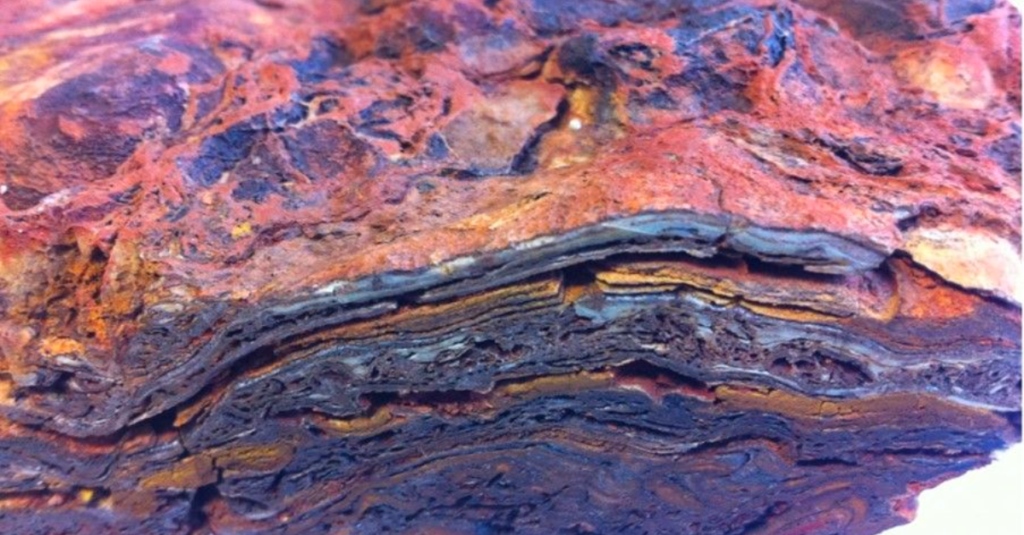3.5 billion-year-old rock structures are one of the oldest signs of life on Earth
A new study says that some of the oldest life on Earth was found in layered rocks in Western Australia.
The fossils in question are stromatolites, which are layered rocks made by the waste of microbes that make food from sunlight. Scientists agree that the oldest stromatolites were made by living organisms 3.43 billion years ago.
However, there are other stromatolites that are even older. Stromatolites that are 3.48 billion years old have been found in the Dresser Formation of Western Australia.
A piece of stromatolite from the Dresser Formation, with a layered structure made of hematite, barite, and quartz, and a dome-shaped top. (Photo by Keyron Hickman-Lewis.)
But after billions of years, all traces of organic matter have been washed away from these older stromatolites. This makes people wonder if they were really made by microbes or if they were made by some other geological process.
The conclusion of the new study is that it was old life.
The research was led by Keyron Hickman-Lewis, a paleontologist at the Natural History Museum in London. He said, “We were able to find certain specific microstructures in certain layers of these rocks that are strong signs of biological processes.”
Microbial mats
Hickman-Lewis told Live Science that the results could change the way we look for life on Mars. Iron oxide coats the stromatolites in the Dresser Formation.
This is because iron reacts with oxygen in the air to make iron oxide. Mars’ surface is also oxidized, which gives it a rusty orange color. Hickman-Lewis said that the rocks on Mars could have the same structures left by ancient Martian life.
Hickman-Lewis and his team looked at stromatolites from Western Australia. They were first found in 2000 by Frances Westall at the National Center for Scientific Research (CNRS) in France. They used different high-resolution 2D and 3D imaging methods to look closely at the layers of the stromatolite.
What they saw gave them a hint of how messy and wonderful biological growth is. Researchers found layers that were not all the same height. They also saw little dome shapes, which are signs of photosynthesis (opens in new tab) because microbes that get the most sun will grow faster than those that don’t get as much sun. They also saw the typical columnar structures of modern stromatolites, which can still be found in a few places around the world.

Linda Kah, a sedimentologist and geochemist at the University of Tennessee who was not involved in the new study, said, “Microbial mats give you layers that have different thicknesses and tend to be wrinkly or crinkly or go up and down on very small spatial scales.” She told Live Science that when you put all the structural clues together, “you end up with what looks like the features of a microbial mat.”
Microbes on Mars?
Even though there is evidence that the stromatolites in the Dresser Formation are old signs of life, this doesn’t make them the oldest life on Earth. This (possible) title could go to stromatolites found in Greenland rocks that are 3.7 billion years old or to microfossils from Canada that could be as old as 4.29 billion years. But it’s hard to tell the difference between biological life and non-biological processes in these very old rocks, so these and other similar discoveries are controversial.
Based on the minerals in the stromatolites, the microbial mats in Western Australia probably grew in a shallow lagoon that was fed by hydrothermal vents and connected to the ocean, researchers wrote in the journal Geology on November 4.
Hickman-Lewis said that the methods used to study the Western Australian stromatolites could be used to look for life on Mars, especially if samples from Mars can be brought back to Earth.
Scientists should “think of some of the analyses we’re doing here as practice for the analyses we’ll have to do when we get materials from Mars in about 10 years.”
